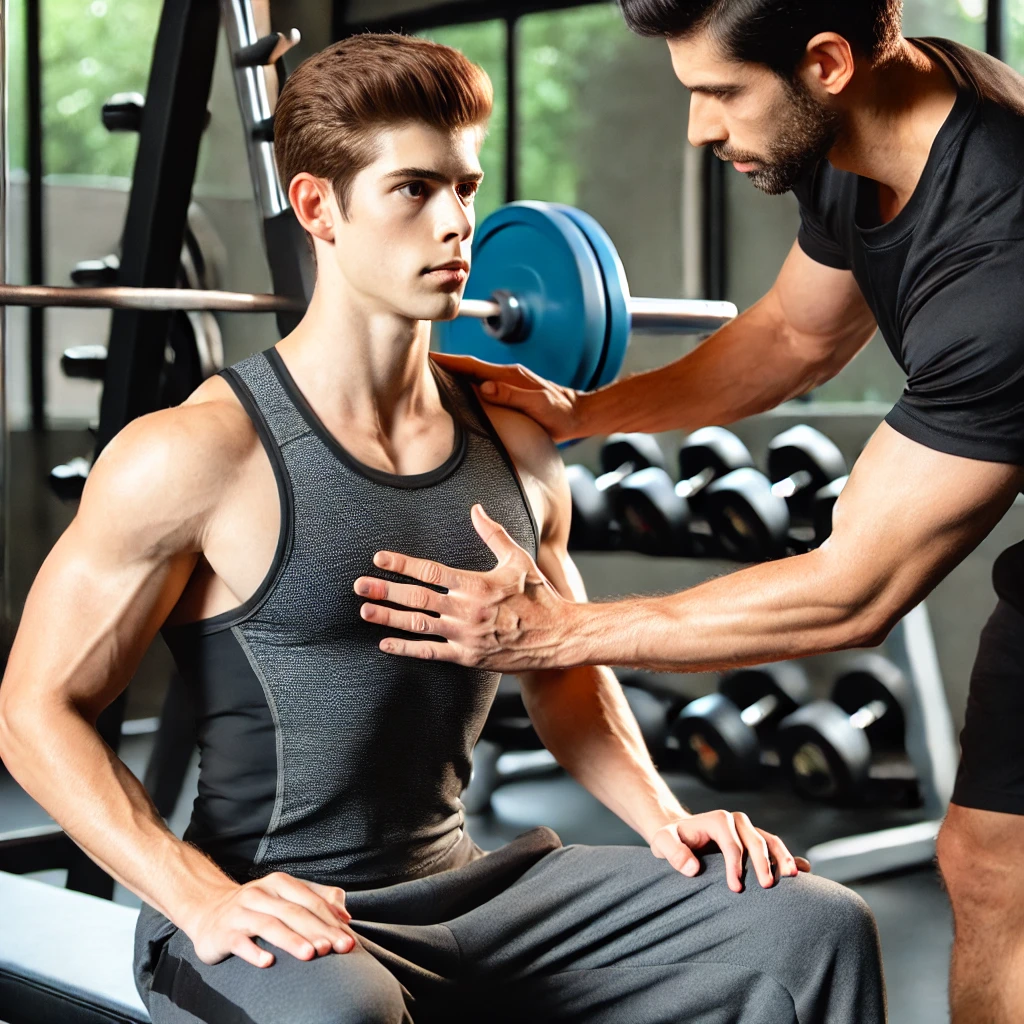Pull-ups are one of the most effective bodyweight exercises that enhance upper body strength, improve grip power, and build a muscular back. However, many struggle to perform even a single rep correctly. Whether you’re a beginner or looking to perfect your technique, this guide will help you master the Perfect pull-up technique. The key to performing a perfect pull-up lies in proper form, consistent practice, and engaging the right muscle groups. By following these steps and avoiding common mistakes, you can gradually build your strength and perform pull-ups effortlessly.
Table of Contents



Benefits of Pull-Ups
Pull-ups are an excellent exercise with numerous benefits. They strengthen the upper body by targeting the back, shoulders, arms, and core muscles. Additionally, they improve grip strength, which is essential for lifting heavy weights and performing other compound movements. Pull-ups also enhance athletic performance, making them beneficial for sports that require pulling strength, such as rock climbing and gymnastics. Moreover, they help in fat loss by burning calories and promoting muscle definition. Incorporating pull-ups into your workout routine can lead to improved endurance and functional fitness.
Step-by-Step Guide to the Perfect pull-up technique
1. Master the Basics
Before jumping into pull-ups, ensure you have sufficient upper body strength. Exercises like dead hangs, assisted pull-ups, and lat pulldowns can help build a solid foundation. Dead hangs improve grip endurance, while assisted pull-ups allow you to develop the necessary pulling strength. Lat pulldowns help activate the same muscles used in pull-ups, making the transition smoother. Strengthening your core is also crucial, as a stable core prevents excessive swinging and maintains proper posture throughout the movement.
2. Focus on Grip Strength
A strong grip is crucial for pull-ups. Use exercises like farmer’s carries, wrist curls, and resistance bands to enhance grip endurance. Holding onto the pull-up bar for extended periods, known as dead hangs, can also help improve grip strength over time. Different grip variations, such as the pronated (palms facing away), supinated (palms facing towards you), and neutral grip, can target different muscles and provide a well-rounded grip training approach. Developing a strong grip will prevent fatigue and allow you to perform multiple pull-ups without losing control.
3. Engage the Right Muscles
While pulling yourself up, focus on engaging your lat muscles rather than relying solely on arm strength. This ensures better efficiency and reduced strain on the elbows. Squeezing your shoulder blades together and maintaining tension throughout the movement helps in proper muscle activation. Imagine pulling the bar down rather than pulling yourself up to engage your back muscles more effectively. Developing a strong mind-muscle connection can significantly enhance your pull-up performance.
4. Correct Hand Placement
- Standard Pull-Up: Hands slightly wider than shoulder-width apart, palms facing away.
- Chin-Up: Hands closer together, palms facing towards you (targets biceps more).
- Wide-Grip Pull-Up: Hands placed wider than shoulder-width to maximize back engagement. The placement of your hands determines which muscles are activated during the pull-up. For beginners, starting with a standard or slightly wider grip can be beneficial. Experimenting with different grips can help target specific muscles and improve overall strength. Ensure your hands are positioned comfortably to prevent unnecessary strain on the wrists and shoulders.
5. Maintain Proper Form
Maintaining proper form is crucial for performing pull-ups effectively. Start in a dead hang position with arms fully extended, keeping your body stable. Pull your chest toward the bar while keeping the core tight and engaging the back muscles. Avoid swinging or using momentum, as this reduces the effectiveness of the exercise. Lower yourself back to the starting position in a controlled manner, ensuring a full range of motion. Performing pull-ups with proper form not only prevents injuries but also maximizes muscle engagement, leading to better results.
6. Progress Gradually
If you find pull-ups challenging, start with assisted pull-ups using resistance bands. Negative pull-ups, where you lower yourself slowly from the top position, can also help build strength. Jumping pull-ups, which involve using a slight jump to aid the upward movement, are another effective way to practice. Gradually increasing the difficulty by reducing assistance and performing full-range pull-ups will ensure steady progress. Consistency is key, so make sure to include pull-up variations in your regular workouts.
7. Increase Reps & Intensity
Once comfortable, challenge yourself by increasing reps, trying weighted pull-ups, or experimenting with different grip variations. Incorporating additional resistance, such as wearing a weighted vest or holding a dumbbell between your legs, can further enhance muscle development. Tracking your progress and setting goals can keep you motivated and help you push past plateaus. Aim to gradually increase the number of pull-ups you can perform in each session.
8. Stay Consistent
Perform pull-ups at least 2-3 times a week to see progress. Combining them with other back and core exercises, such as rows and planks, can contribute to balanced strength development. Consistency in training and maintaining proper nutrition will help you achieve better results over time. Recovery is equally important, so allow your muscles to rest and repair to avoid overtraining and injuries.
Common Mistakes to Avoid
- Using momentum – Swinging reduces effectiveness and increases injury risk.
- Not engaging the back – Relying only on arms leads to improper muscle activation.
- Half reps – Ensure a full range of motion for maximum benefits.
- Neck craning – Keep a neutral spine to prevent strain. Avoiding these mistakes will ensure that your pull-ups are performed correctly and safely. Proper execution is essential for maximizing gains and preventing injuries. Focus on quality over quantity and strive to improve technique before increasing repetitions.
Conclusion
Achieving the Perfect pull-up technique requires patience, practice, and proper technique. Start with assisted exercises, focus on strength-building, and maintain good form. With consistency and effort, you’ll soon master pull-ups and enjoy their full benefits! Pull-ups are a challenging yet rewarding exercise that can transform your upper body strength and overall fitness. Stay dedicated, track your progress, and celebrate small victories along the way. With determination and the right approach, you can conquer the pull-up and make it a staple in your workout routine.
Join Corfit Gym today and master the perfect pull-up with expert guidance and a supportive fitness community!

